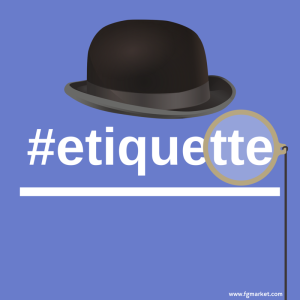The humble hashtag has been around a lot longer than social media would lead us to believe. Although adopted and popularized by Twitter in 2007, the hashtag has been around since the late ’90s, used by Internet Relay Chat to categorize images, messages, videos and other items into groups. Since that time, most social media platforms have embraced the hashtag, including Instagram, Facebook, Google+, and Pinterest.
And with that intro, a code of ethics was born. Although, like the Internet, these are not set-in-stone rules about what’s proper when using hashtags, following these 5 easy steps will definitely help your business succeed by increasing your social presence, and preventing you from committing mild Internet no-no’s.
Hashtag Only Relevant Tags
Just because you CAN hashtag a word doesn’t mean you HAVE to hashtag it. Hashtagging the word “new” in the sentence, “Check out the beautiful #new floral arrangement from Bill’s Flowers!” won’t help your tweet any, because “new” relates to so many different topics. Hashtagging “floral arrangement” or “Bill’s Flowers,” however, will direct customers exactly where they need to go to find more tweets or posts related to your hashtagged words. Ex: “Check out the beautiful new #FloralArrangement from #BillsFlowers!”
Stay Away From Excessively Long Hashtags
Hashtags are great for tagging one or two words, or even sentences with only a few words, but when you make the mistake of hashtagging an entire paragraph full of words, you just end up confusing customers. DON’T: “#checkoutouronlineexclusivedealsavailableinourwebstore.” DO: “Check out our #OnlineExclusive deals available in our webstore!” And when you do use multiple words in a tweet, capitalize the first letter of every word in your sentence, to make the tag easier to read.
Use Hashtags For Promotion, But Don’t Spam
No one likes spam, not even the people who make it (we’d like to think). So it’s okay to use hashtags to promote an event, like a #WeeklyNewsletter, but a weekly newsletter means you send it out weekly. Don’t excessively tweet about checking out your business’s newsletter every day. The day before, or day of the newsletter going out is plenty.
#TeamFollowBack #LikeForLike and #RepostForRepost Are Bad
I’m sure we’ve all encountered those random accounts that follow us on Twitter and Instagram for seemingly no reason. Usually, those accounts are spam accounts that are looking only to get the most followers possible and have no interest in what you’re business is actually about. So don’t use your social accounts to follow hundreds or thousands of people that have no relationship to your business. Users get annoyed by this. Make sure to really research those you wish to follow before clicking the button (making sure they’re not spam accounts first, of course).
#Don’t #Hashtag #Every #Word
#Seriously #Don’t #Do #This. It’s unnecessary and makes it almost impossible for tags to be grouped properly. Hashtags aren’t meant to make categorization easier, not more convoluted and infuriating to navigate.
Remember, hashtags are meant to make your use of social media optimal and more efficient. Don’t make it any harder than it needs to be.



Leave a Reply